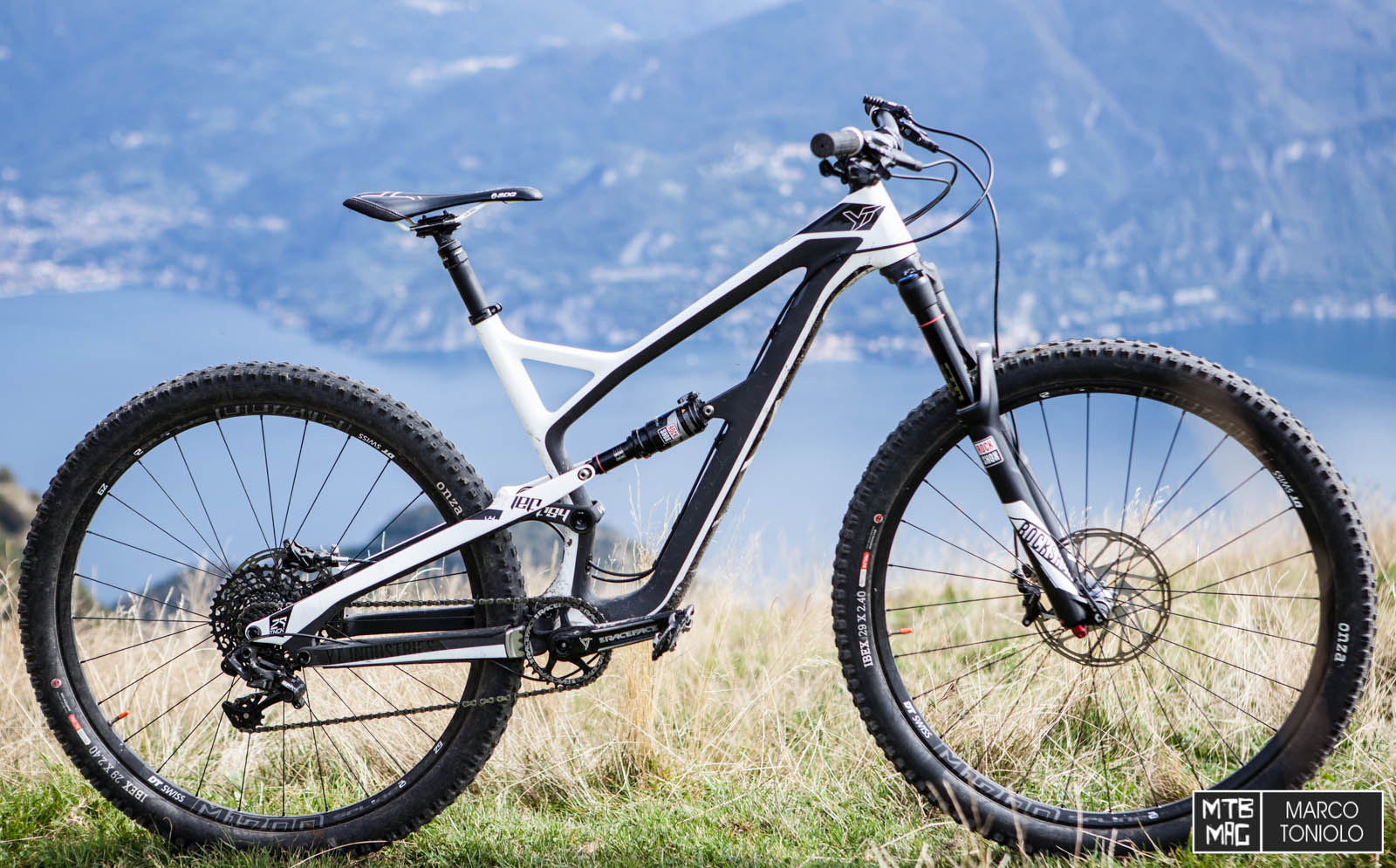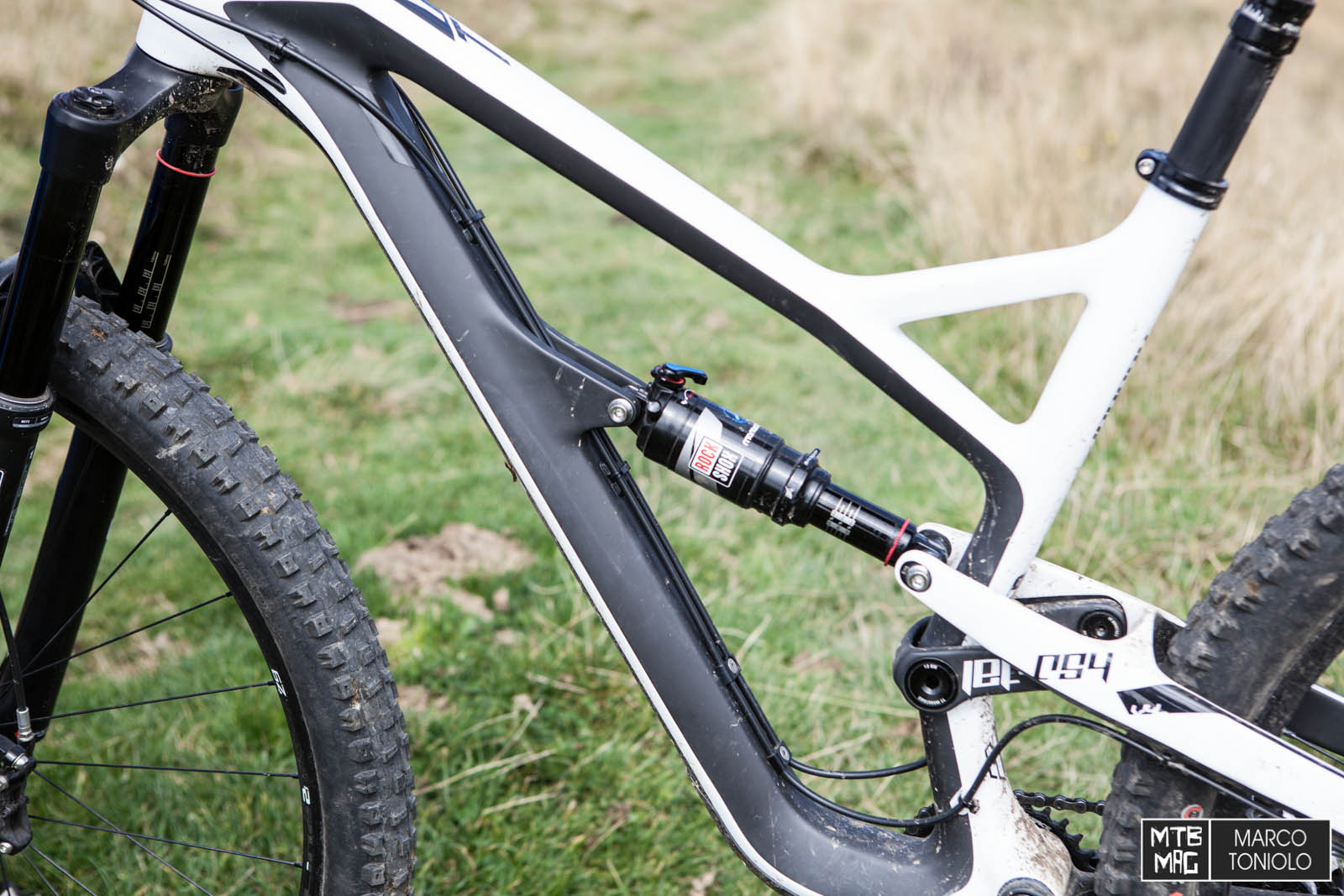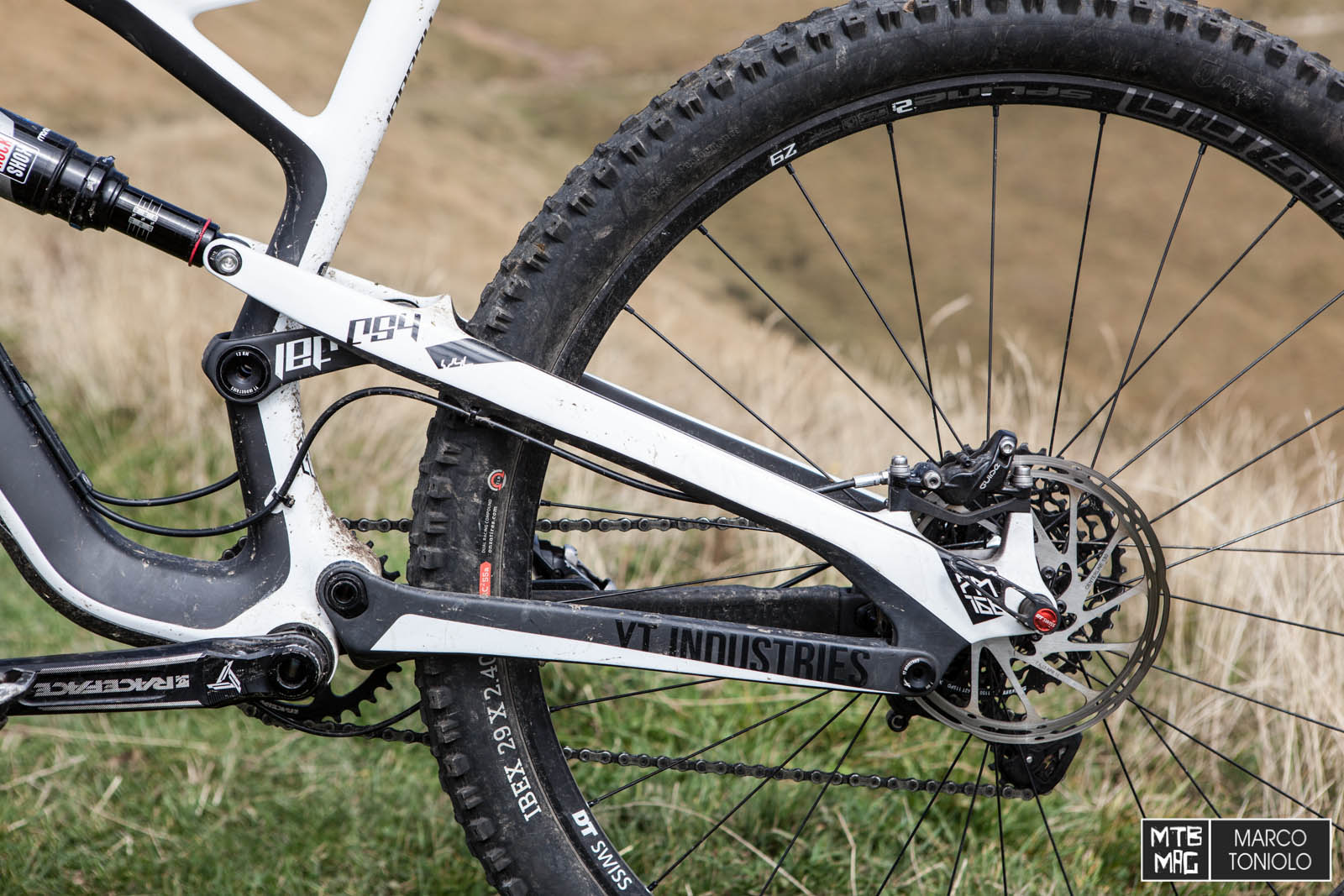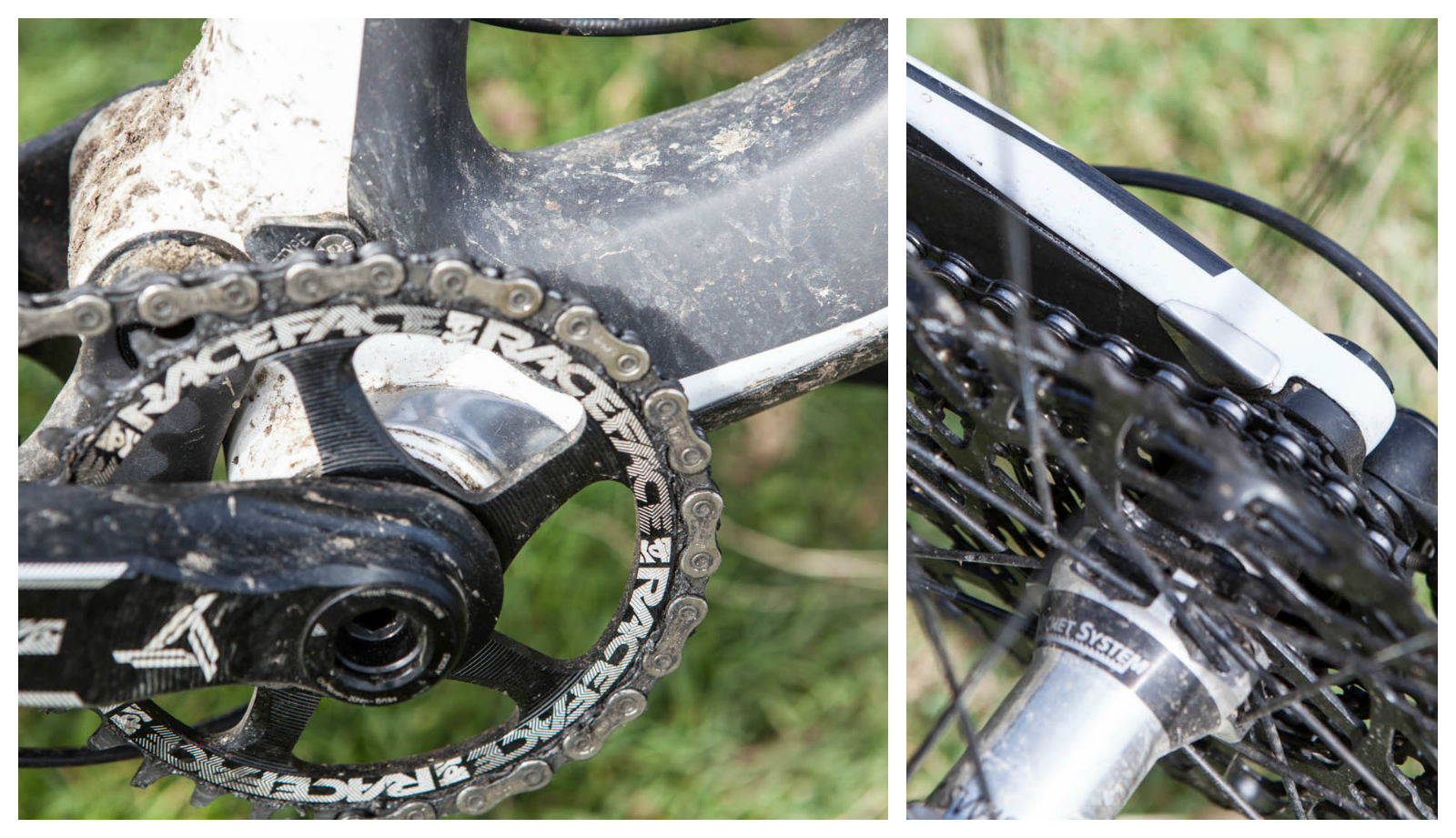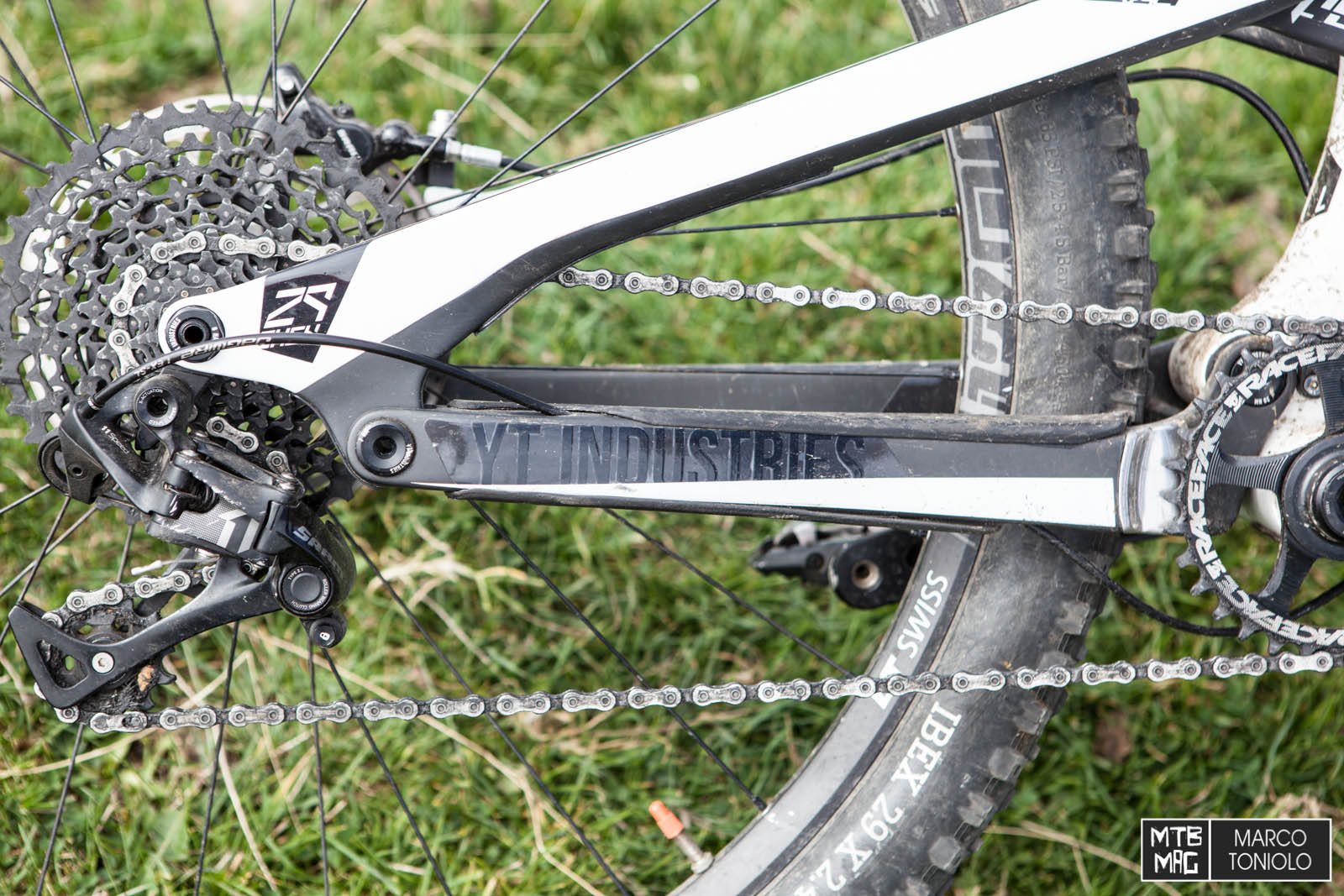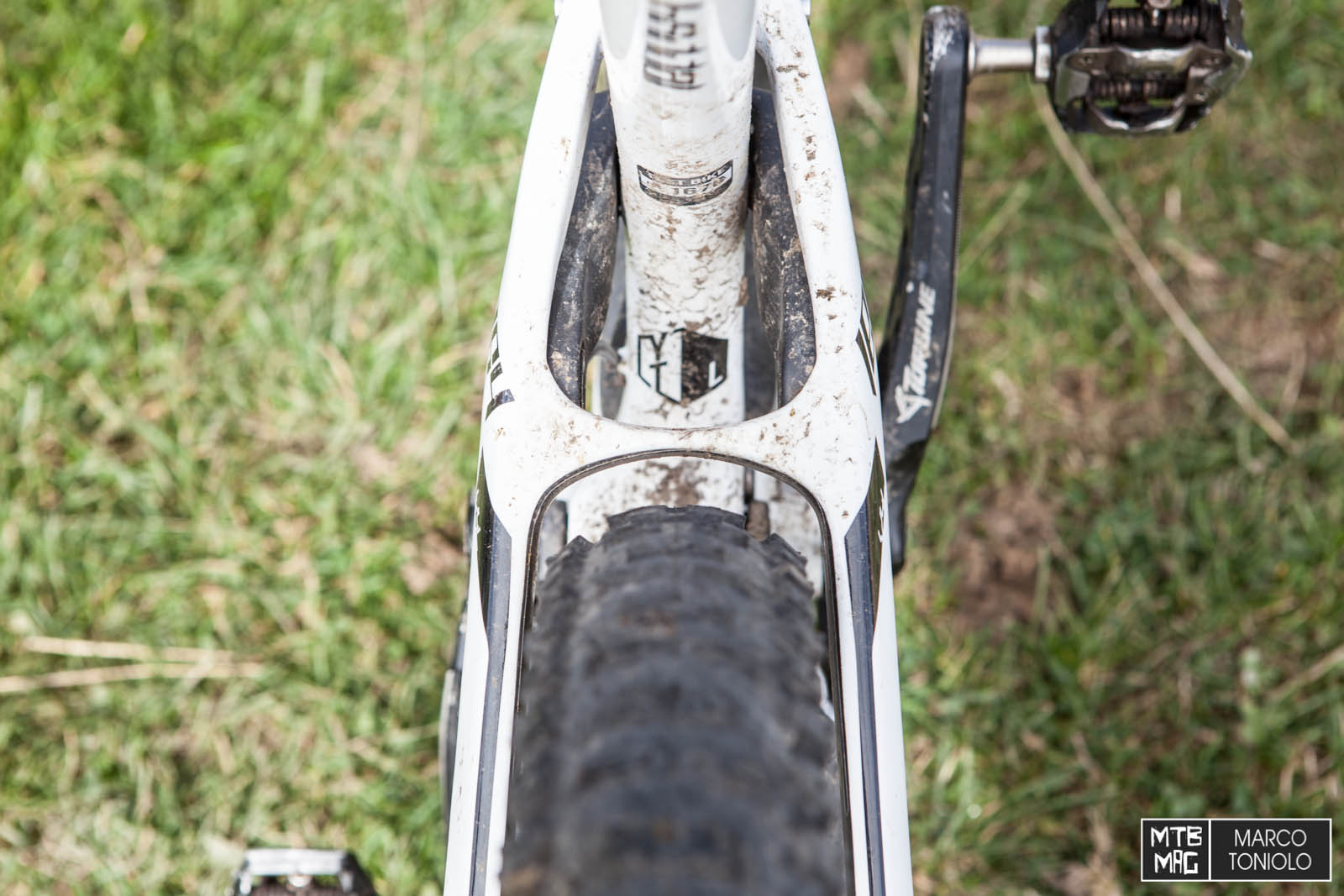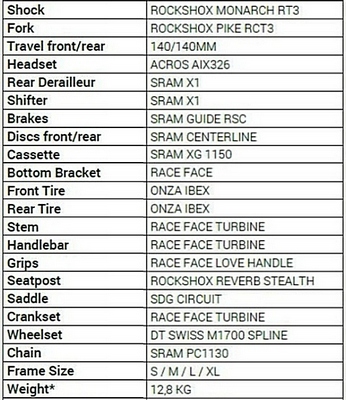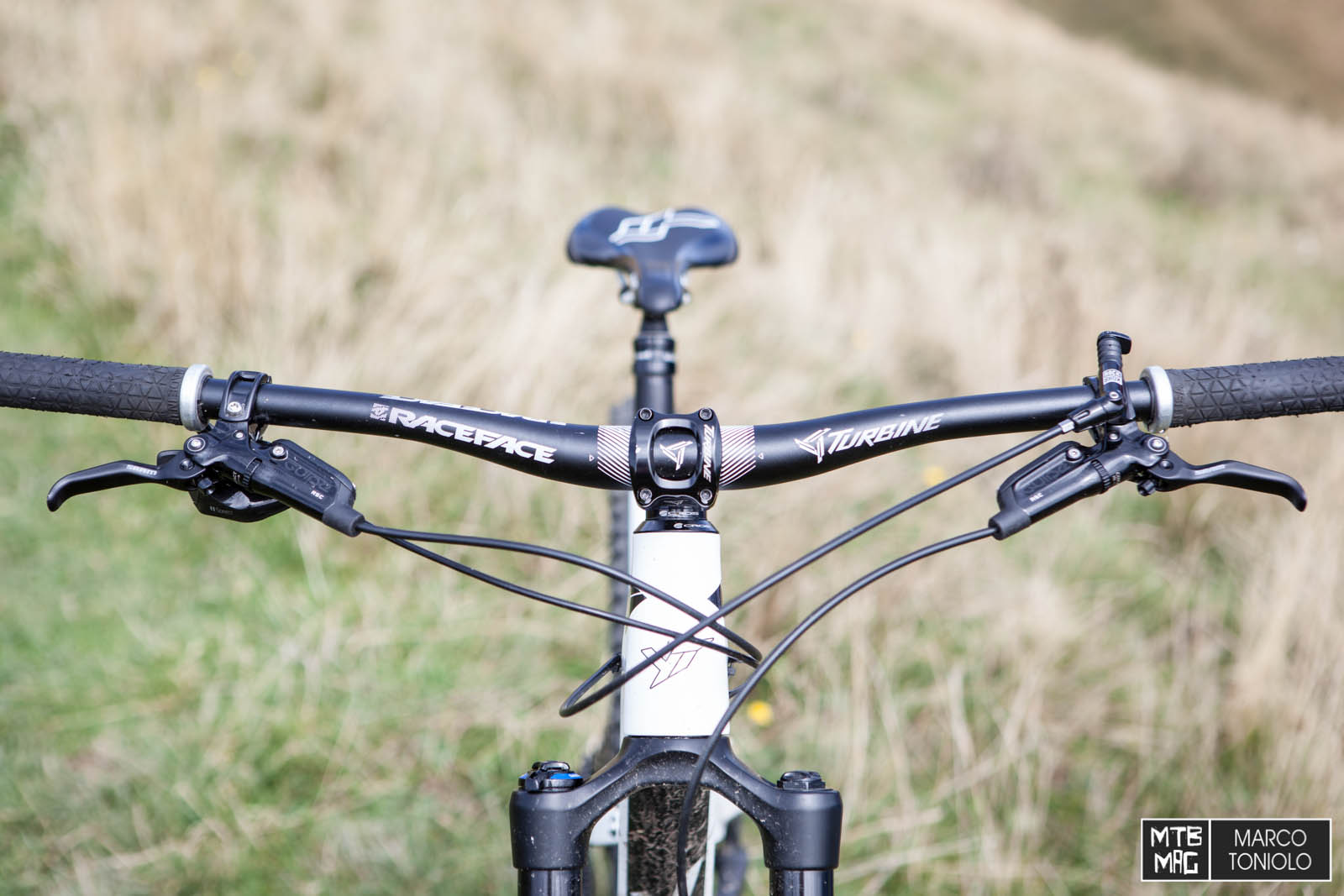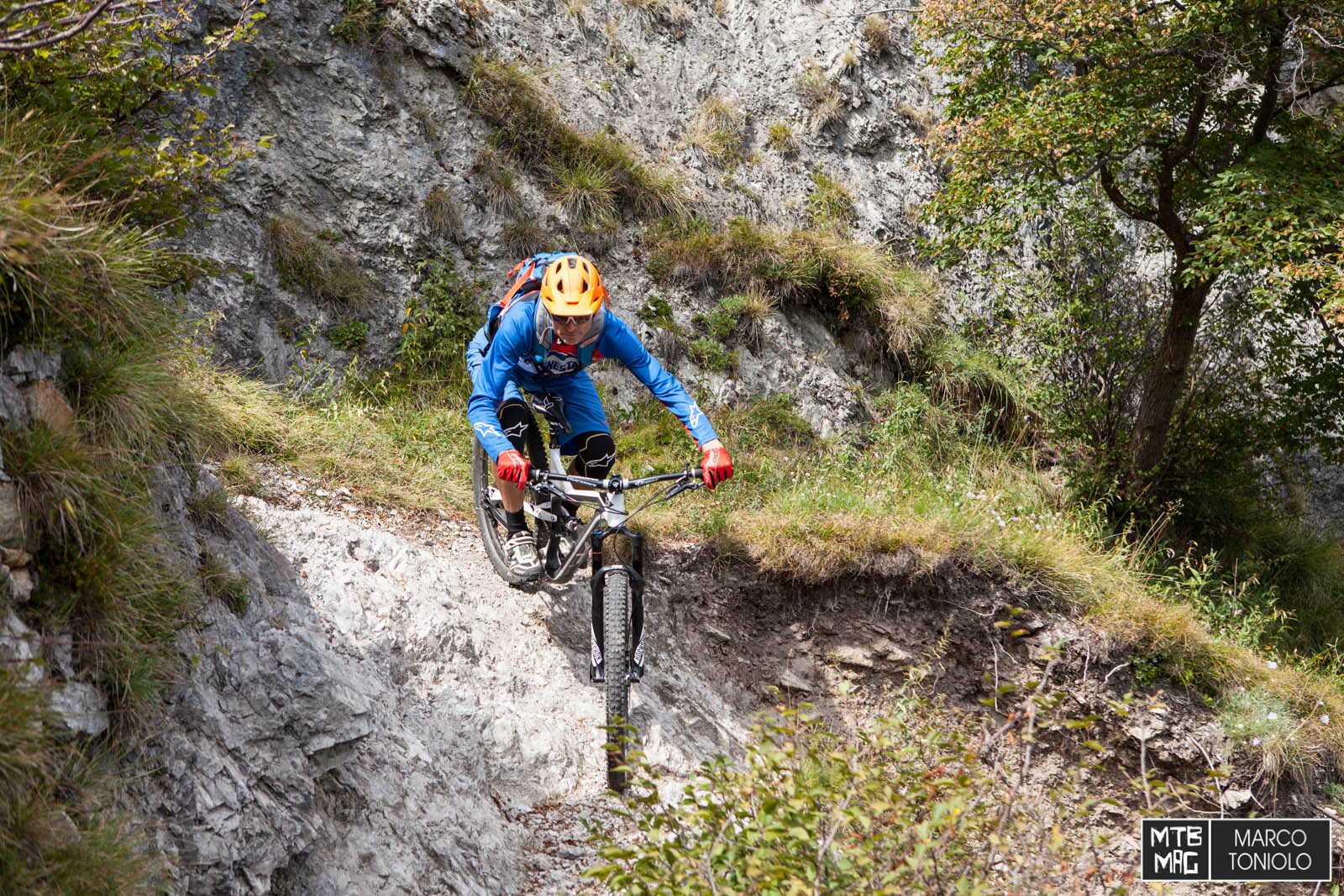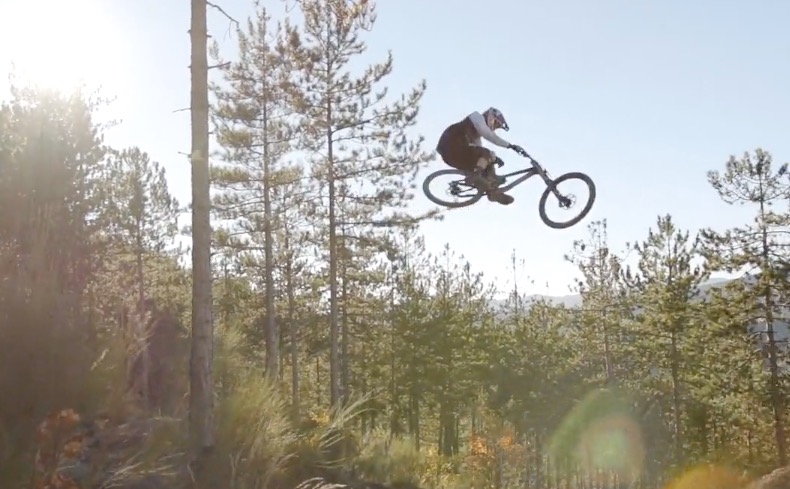[ad3]
In the beginning of March we met at Punta Ala to compare several trailbike models. Hector, our editor based in Spain had just come back from Madeira, where he attended the launch of the Jeffsy He came back with very enthusiastic first impressions, so we were eager to spend a bit more time testing the new YT 29er trailbike. Since then, thanks to the usual aggressive price policy, the Jeffsy has become one of the most discussed and desired bikes of 2016.
At the beginning of August we got the CF Comp1, just a step below the top of the line CF Pro that Hector tested some time ago. The two bikes use the same high-modulus carbon frame, used also for a third version called CF Comp 2. YT also offers the Jeffsy in an aluminum frame, again with three different specs.
Jeffsy CF Comp1 highlights
Frame: carbon, high modulus with adaptable geometry
Wheels: 29”
Travel front/rear: 140/140 mm
Compatible with 650+ format: no
Rear Boost: yes
Fork boost: no
Tubeless ready rims and tires: yes
Water bottle cage: yes, with 0.5 l water bottle
Gearing: 1×11 (32T front / 10-42 rear)
Front Derailleur mount: yes
Geometry
The tendency towards lower and longer geometries applies also to the trail segment. On one hand, the advantages are crystal clear, on the other hand, open head angles and increasingly long wheelbases may go against the most interesting features of those bikes, namely reactivity and nimbleness. The risk is even higher when, as in the case of the Jeffsy, dealing with 29ers.
YT worked on the relationship between the various geometric values, seeking a perfect balance. While the head angle in low position is one of the slackest in this category and the chainstay is fairly long, the other values are actually more average, including reach and top-tube. The end result is a wheelbase that is quite long but not extreme.
Frame
As previously mentioned, the frame of the Comp1 is made entirely of high-modulus carbon. The smooth lines are reminiscent of the Capra, which also shares the same rear suspension design, a quadrilateral with Horst linkage. The “snow white/rawr” color of the tested bike is perhaps a bit bland, but the Comp1 is also available in a more appealing and elegant “rawr/jet black” (basically all black).
The suspension rocker, fixed on the seat tube, is pretty big, but fits well into the upper seat stays. The seat stays then connect directly to the rear shock, which directly connects to the rear axle. Below the rear shock there is enough space for a dedicated 0.5l water bottle cage. The highly sloping top-tube keeps the standover height low, and requires a connecting bridge with the seat tube for support.
Vertically, the chainstay is compact, with seat stays and chainstays forming a tight angle. In order to avoid any rigidity issue possibly caused by this design, dimensions are kept pretty generous, especially close to the Horst linkage and the brake caliper.
Tucked in close to the bottom bracket, there’s a solid bridge at the main pivot, connecting the two chain stays.
The Jeffsy has lots of integrated, well thought out frame protection. Plastic protection is located under the top tube, as an inner chain guard and on the inboard side of the seat stay.
Additional metallic pieces protect the bottom bracket from chain drops, the chainstay from chain-suck and at the end of the chainstay from chain drop by the smallest cog.
The perfect functional routing makes up for some cable fixing with cable ties: the brake cable runs always externally and the rear derailleur cable, considering the internal routing, follows a really smooth line. It all results in a precise and smooth shifting.
Even though the chainstay is boost, 27.5 plus wheels don’t fit between the stays. This can be a limitation in comparison to the increasing number of frames that allow this option but, on the other hand, the geometry has no compromises (in particular the bottom bracket drop).
The Jeffsy’s frame might not be the lightest on the market (we don’t know the exact weight), but it has a really solid, confidence inspiring feel. This is good news for those who always believed that a well-crafted and well-finished frame alone should cost as much as the Jeffsy complete: It’s great to see high level manufacturing quality and attention to detail that’s usually reserved only for top-of-the-line models. The only negative point of the frame is its lack of ISCG tabs.
Flip Chip
The device which enables two different geometry settings is called the Flip Chip. It consists of a plate with an eccentric hole, located in the seat stays, which enables you to change the position of the lower shock eyelet by some millimeters.
The switch from one position to the other can even be made on trail: you need to take the two plates (one on each side) off, rotate them by 180° and fix them back in the new position. Working on one side, you do need two allen keys. Unfortunately, the markings indicating which position is set, are not that precise. In the picture above, for example, the bike is set in low position, which is hardly noticeable from the graphics.
Suspension
Both the fork and the rear shock are from RockShox, a Pike RCT3 and a Monarch High Volume RT3, respectively.
Not much to say about the former, being one of the most popular and tested forks. It has been mounted on our test bike with two tokens and a third one not installed. After one ride we installed also the latter, with the possibility to install a fourth token for more aggressive downhill use.
The RT3 High Volume was set with 4 air spacers out of 7. Starting from the configuration we tried, it is possible to adjust progressivity in both directions. After a couple of tries we found the right setting with sag value between 25% and 30%. With a rider weighting around 75kg you need to set approximately 150psi, a fairly low value which is a big plus when cornering fast. Tinkerers may want to experiment with more sag, in this case you need to add spacers to increase progressivity. Additional spacers are not supplied, so you need to get them separately.
Specs
As usual for companies selling directly on-line, the Jeffsy CF Comp 1 is provided with high level specs considering the price. Below are the most interesting components to analyze in detail.
The YT downhill DNA comes out in the gearing choice. The 32 tooth single chainring with a 10-42 cassette on a 29er at 13kg of weight is a pretty demanding gearing for trail use, but it is ideal for the downhill side of this bike. Additionally, the frame can support front-pull E-type derailleurs, and the CF Comp2 is basically the CF Comp1 with double chainring.
Having brakes, drivetrain and dropper seat post of the same brand, enables YT to group all controls on the same remote thus obtaining a perfect ergonomic setup. Admittedly we are splitting hairs, but considering the fact that the CF Comp1 does not have a front shifter, it would make more sense ergonomically to spec a Reverb lever that mounts under the bar on the left side. RaceFace grips may feel a bit uncomfortable because of the lock rings at the edges, probably due to a personal habit of gripping them at the very end. And this is why in the pictures you see other grips.
The stem length changes according to the size: 50 mm on S/M, 60 mm on L/XL. Since the tested bike was a L, the stem was 60mm long and installed with a 1,5cm spacer. This meant a slightly “high and stretched” position. Having it available, since it is supplied on the smaller sizes, we installed the 50mm stem leaving only 5mm of rise. The result is a better downhill position, more aggressive and with little climbing disadvantages in the end. You can’t say the 760mm bar is narrow, but if you are used to wide bars, it is always hard to cope, especially since this bike wants you to rocket downhill. Not to criticise the specs, but we would choose a bar that’s a couple cm wider.
Since the DT Swiss M1700 Spine wheels, as well as Onza Ibex 2.4” tires are tubeless ready, we decided to remove the air tubes and set everything up tubeless. Valves, unfortunately, are not supplied (or at least not to us). Onza declares for this version of the Ibex a weight of 880 gr., approximately 30gr less than what we’ve measured. The tires are well suited to this type of bike and offer up really good traction in a variety of conditions.
We’d never had the chance to test the Guide RSC properly, here they’re bolted up with 200 and 180mm discs, and they’ve been a pleasant discovery. They have the right balance of power and modulation, and resist fading.
Climbing
To put it bluntly, on flowing trail Jeffsy does its job but without honors. In fact, It does not convey that light and fast feeling one experiences on climbing-oriented trailbikes. That makes sense though, considering the choice of the specs and the frame structure with no compromises in downhill performance. Even though at that price one cannot complain, the bike is no featherweight. The rims and tires aren’t exactly super light either, but well intentioned for downhill. That said, when climbing without pushing too hard, the seat position is enjoyable; only when on really steep terrain do you feel a bit slack with the bike set in the low position (remember that also the seat angle reduces relative to the high position).
While on flowing and flat climbs, the Jeffsy is good but not great, on technical terrain it is quite impressive. In the low position the Jeffsy tracks easily and precisely, requiring minimum effort even on steep and bendy climbs. On rough terrain, the behavior is equally good, no pedal kickback has been experienced and the bottom bracket height (approximately 340mm) is high enough when things get technical. The only thing to pay attention to, on steep terrain is locking out the shock. Needless to say, in the high position things get even better, especially given the possibility to use the shock in its “pedal” position on steep terrain, resulting in better traction. While it is more comfortable, the main advantage is the ability to keep a smooth and round pedal stroke, thus saving energy.
Downhill
As soon as the front wheel points down, it is clear that the Jeffsy was built to excel at downhilling. It is very difficult to find any weak points in this terrain but, to be fussy, some other current models are nimbler and more responsive. This is the result, like it or not, of having an relaxed and stretched out geometry, especially at the head angle. Nonetheless, by setting the Flip Chip in high position, this tendency can be reduced. Is it worth it? Not really, because at the same time the bottom bracket rises by approximately 8mm.
Now let’s really get into the downhill characteristics: the Jeffsy is a real rocket, it gets up to speed in the blink of an eye and holds its line with great precision. Those downsides on climbs, here turn into such advantages that, unless the trail becomes too rough, the performance is as most enduro models. Very few trailbikes let you rip down through steep, rutted sections feeling perfectly safe and in control. The Jeffsy is one of those, thanks to the rigid and precise front end. The rear suspension is perfectly suited for this type of bike, with excellent small bump sensitivity and enough progressivity to absorb big hits and drops. The Monarch works well, but the Jeffsy doesn’t make you feel like braking, not even on harsh ground. Therefore it is quite likely to overheat, and we often felt the need for a more downhill-oriented shock with a piggyback. Even though the Jeffsy rides well on enduro trails, in the end this kind of trailbike is often chosen to take on long alpine tours with hard descents. In this field the Jeffsy does not disappoint, mostly thanks to its stability, the slack head angle and the 29” wheels. On the other hand, tighter sections do require a bit of effort.
Conclusions
If you are looking for a bike to climb up like a rocket, but with a bit more comfort and safety on the downhill compared to your former marathon or xc full bike, the Jeffsy is not the best choice. Instead, if you want a trailbike with great downhill performance, allowing you to both push hard and conquer technical terrain, then this is one of the best options on the market. Being even more clear: in the beginning-of-the-year comparative test of 29ers, the Jeffsy would have been ok on the flowing climb, very good on the technical climb and a serious contender for the first place downhill.
Weight and price
Measured weight (size L with inner tubes installed): 13.08 kg
Price: 3,599.00 Euro (now on sale at 2,999.00 Euro)

